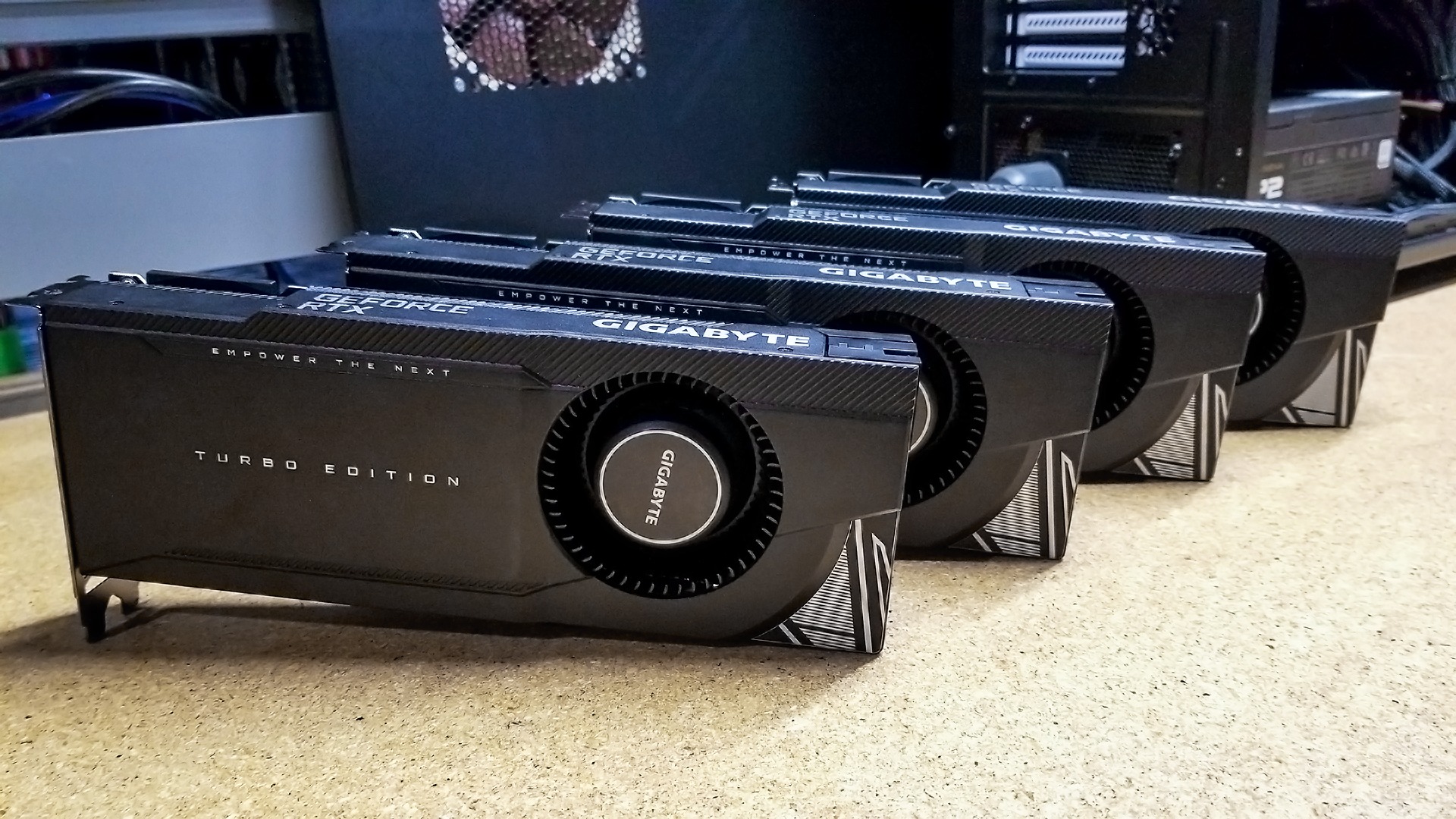This monster PC has four Nvidia RTX 3090 GPUs inside – and it doesn’t melt
Temperatures are acceptable, but power draw is a trickier beast

If you’ve been dreaming of owning a PC with one of Nvidia’s RTX 3090 graphics cards nestling inside it, well, how about a machine with four of these GPUs residing within its case?
Puget Systems makes workstation PCs for customers requiring extremely powerful setups, and experimented with the idea of a single computer that contains four RTX 3090 GPUs, wondering whether it might be a viable proposition. And the short answer is that it is – with some caveats on the power front.
- Check out our in-depth Nvidia RTX 3090 review
- Where to buy Nvidia RTX 3080: find stock here
- We'll show you how to build a PC
The rig that Puget put together (spotted by Videocardz) comes with four RTX 3090 graphics cards as mentioned, alongside an Intel Xeon W-2255 10-core processor backed with 128GB of RAM (the full spec is here). Powering all this was an EVGA SuperNova 1600W P2 power supply.
Of course, this is a workstation PC, aimed at heavyweight applications – it’s far from a gaming machine, and the PC maker was testing it with benchmarks that included OctaneBench, V-Ray Next, RedShift and DaVinci Resolve. These pro apps allow the user to take advantage of multiple GPUs without driver support (or them being hooked up by NVLink, which ‘only’ supports dual 3090 GPUs anyway).
The upshot was that the system acquitted itself admirably in these tests, with the power of these GPUs scaling roughly proportionately as more RTX 3090s were added into the mix (up to the full four).
The exception came with DaVinci Resolve, which scaled up to three GPUs, albeit with more modest improvements, but the addition of a fourth RTX 3090 did next to nothing to improve performance (although that could be partly related to CPU bottlenecking – that 10-core Xeon was picked to keep down power demands on the processor front). RedShift, too, didn’t scale quite as well when moving up to three or four graphics cards, but still saw a decent improvement.
Blower benefits
Puget’s RTX 3090 cards were models with 80mm blower fans from Gigabyte, with the firm noting: “This type of blower-style cooling system is much better for multi-GPU configurations as it exhausts the majority of the heat directly out the back of the chassis. And when we are dealing with four 350 watt video cards, that is 1,400 watts of heat that we certainly want out of the system as quickly as possible.”
Are you a pro? Subscribe to our newsletter
Sign up to the TechRadar Pro newsletter to get all the top news, opinion, features and guidance your business needs to succeed!
You’re not kidding. At any rate, it turns out that from a thermal point of view, this setup worked fine, with the GPUs running at between 73C on the bottom card, to 80C on the top board (with the 3090s peaking at 88% of their maximum fan speed – which as you can imagine, made for a noisy PC, but that’s to be expected).
The problem with this experimental quad RTX 3090 PC wasn’t with temperatures or noise, then, but power draw was a thornier issue. The 1600W power supply was just able to cope, but it was a very close-run thing.
As Puget points out, it measured a peak power draw of 1,717W from the wall socket, which should translate to around 1580W (the PSU having a 92% efficiency rating) in the PC, meaning there was 20W to spare.
That’s too close for comfort for consistent daily operation, of course, and so Puget recommends the best approach would be to use a 2400W PSU, noting: “Most house and office outlets will be on 15 amp circuits in the US, which may mean hiring an electrician to do some electrical work if you decide to use one of the very few 2400W power supplies that are available.”
Still, if you can afford this kind of workstation PC and have pockets deep enough for four RTX 3090s, the extra electrical work won’t likely be a major sticking point.
Via Wccftech
Darren is a freelancer writing news and features for TechRadar (and occasionally T3) across a broad range of computing topics including CPUs, GPUs, various other hardware, VPNs, antivirus and more. He has written about tech for the best part of three decades, and writes books in his spare time (his debut novel - 'I Know What You Did Last Supper' - was published by Hachette UK in 2013).